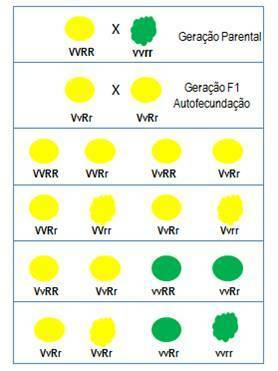Vegetables have some structures capable of secreting substances. These secretions, which can be released to the external environment or to the interior of the plant, have the most varied functions. Secretory cells can be individualized and thus form the so-called idioblasts or even form multicellular structures such as trichomes.All these elements, regardless of morphological type, are called secretory structures or glands.
We can classify secretory structures in several ways. In this text, we will divide these structures into two groups:
⇒ Structures that secrete little modified substances;
⇒ Structures that synthesize secreted substances.
→Structures that secrete little modified substances
hydathodes
Hydatodes are responsible for the process called guttation. These structures, which are located on the margins of the leaves, eliminate water in its liquid form. This process occurs when the days are with high relative humidity, low transpiration rates and good irrigation.
Nectaries
Nectaries, as the name implies, are the structures that produce nectar, substances rich in sucrose, glucose and fructose. Nectaries are present in various parts of the plant's body, and the source of the material to be secreted is phloem and xylem. Nectaries can be classified as extrafloral and floral. The extrafloral is present in vegetative and reproductive parts, except in the flower, and the floral is restricted to the flower.
Do not stop now... There's more after the advertising ;)
salt glands
These structures are found in plants that live in a saline environment. They prevent harmful accumulation of minerals in the vegetable, secreting excess salt in the form of saline solution..
→Structures that synthesize secreted substances
digestive glands
Carnivorous plants have glands specialized in the production of digestive enzymes, such as esterases, acid phosphatases and proteases. Digestive gland cells can secrete enzymes and reabsorb the product from the digested material, reintegrating it into the plant's metabolism.
dairy products
Laticifers are structures specialized in the production of latex, a substance that has different chemical composition depending on the species analyzed. Generally, latex protects the plant against herbivory and attack by other microorganisms.
stinging trichomes
Trichomas produce secretions that cause allergic reactions.These trichomes act as important forms of defense for the plant, preventing herbivory.
In addition to these structures already mentioned, we can mention those that secrete phenolic compounds, lipophilic material, mucilage and gum. Typically, these structures are related to plant defense. The phenolic compounds, in cases of water stress, guarantee the structure of the cell.
By Ma. Vanessa Sardinha dos Santos
Would you like to reference this text in a school or academic work? Look:
SANTOS, Vanessa Sardinha dos. "Vegetable secretory structures"; Brazil School. Available in: https://brasilescola.uol.com.br/biologia/estruturas-secretoras-vegetal.htm. Accessed on June 28, 2021.

